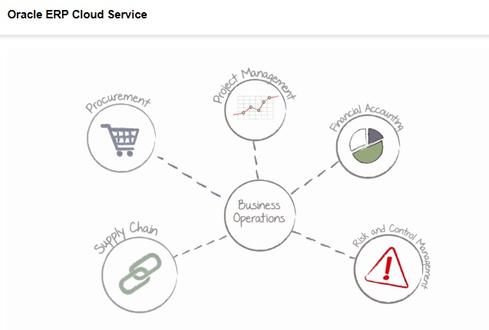Can new "cloud" ERP options from Microsoft, Oracle, SAP, and Infor be compared to SaaS offerings? These four attributes must be questioned.

SAP has SaaS options, including SuccessFactors, Ariba, Business ByDesign, and various edge applications. Where the flagship Business Suite ERP suite is concerned, SAP says it is designed to "reinvigorate the core" through the Hana Enterprise Cloud. Introduced in May, this is a managed, private-cloud service environment that runs on the Hana in-memory platform within SAP datacenters. It's a bring-your-own-license model. You either migrate Business Suite deployments or license new deployments to be run by SAP.
Like the other vendors covered here, SAP has long offered ERP hosting through partners, and Amazon Web Services was added as a hosting partner a couple of years ago. SAP Hana Enterprise Cloud is not just another hosting option aimed at speeding and squeezing cost out of conventional deployments. It's very specifically a way to quickly move to the Hana in-memory platform, with SAP managing what are likely to be cutting-edge, high-performance uses of its software.
Key Questions
The options described above range from conventional hosting to SaaS, yet they're all described with the word "cloud." The one attribute these options all have in common is that they let customers run the ERP deployment in somebody else's datacenter. Not having to purchase, deploy, and administer hardware and infrastructure software is certainly one attribute companies want from the cloud. But here are four other attributes you should consider, each raising multiple questions you should ask of your would-be ERP vendor.
Agility: Rapid deployment and rapid (nearly hands-off) software upgrades are what companies expect from SaaS. Will hosted or managed service offerings change the deployment and upgrade experience? Hardware and infrastructure provisioning is one thing; software configuration, integration, testing, and deployment quite another. How long will you have to wait for new functionality, and how disruptive will the major point-release upgrades be five years down the road? Establish a clear understanding of which party handles which deployment and ongoing administrative tasks -- the hosting/managed service partner or your IT department?
Control: Here's where hosted or managed services may have advantages over SaaS. SaaS services typically have many configuration settings that can accommodate company- and industry-specific needs, but customization options tend to be limited. There's the question of where data resides, which becomes very relevant when national privacy and regulatory requirements come into play. Many European countries require local data residency, and such requirements will likely increase, given the NSA's shenanigans.
Next, consider the question of whether you can defer SaaS upgrades that could impact the way your people work. Some vendors give you the option to postpone SaaS service upgrades for up to a year. Other vendors make no exceptions. Also consider integration options with on-premises and cloud-based systems and services. How difficult are they to master? Do they bring ongoing costs to the deployments.

Cost model: Low initial costs and the opex subscription payment model are big draws for SaaS. Are those options open to you if it's not a SaaS offering? When considering any cloud option, go beyond the per-user, per-month charges for the core app. What about data upload and integration fees, administrative fees, add-on options, and other charges that might double or even triple overall costs? Conversely, take labor savings into account if the managed service offering lets you offload deployment, development, and administrative tasks. Talk to reference customers about their experience before signing on the dotted line.
Flexiblity: Where enterprise applications like ERP are concerned, quarterly elasticity is probably more relevant than the ability to spin resources up or down on an hourly or daily basis. But the question is whether the cloud offering (hosted, managed, or SaaS) provides any flexibility. Whether it's subscription or licensed, is there any provision for scaling back periodically if you have unused seats or converting unused subscriptions or licenses to cover other needs? Conversely, how quickly can you scale up (and back down) if you do encounter spikes in business or seasonal demand?
The bottom line for many companies choosing the cloud is the desire to lower IT costs and shift resources -- both money and people -- toward business innovation. Don't assume any old cloud offering will help you get there. Dig into the details, so you have a clear understanding of what you'll gain, lose, and leave unchanged with a prospective cloud ERP deployment.
The crucible of cloud, big data, and distributed computing is hell on systems. Will application performance management cool down complexity -- or just add fuel to the fire? Also in the new, all-digital APM Under Fire special issue of InformationWeek, cloud industry heavyweights discuss the pros and cons of OpenStack support for Amazon APIs (free registration required).
About the Author(s)
You May Also Like







